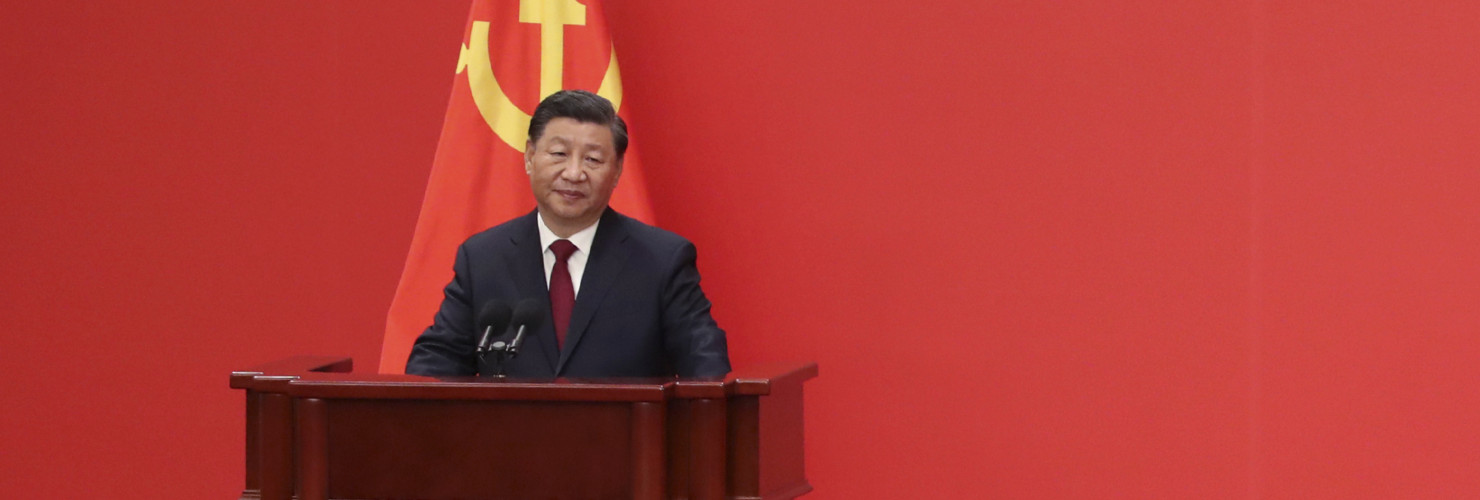

Having it both ways – Third Plenum promises reforms and doubles down on Xi’s grand vision
The key meeting of the Communist Party’s Central Committee strengthens Xi and will likely disappoint citizens and the private sector, say Katja Drinhausen, Max J. Zenglein and Rebecca Arcesati.
After an unusual nine-month delay that led to speculation about friction in the top ranks of the Chinese Communist Party (CCP), the Central Committee’s third plenary session of its 2022-2027 term gave a full-throated endorsement to Xi Jinping’s grand vision for a technology-driven socialist future. The “Third Plenum” used a short communique, a longer “resolution” document outlining 300 measures to address by 2029 and a statement by Xi himself to show the way forward. Despite adjustments in the messaging in response to rising social and financial tensions caused by a weak economy, there should be no illusions about the direction of travel Xi has set for the country.
In a feat of ideological legacy building, the Third Plenum’s 205 voting members doubled down on Xi’s vision of modernization for China – high-quality economic growth driven by high-tech focused on “new-quality productive forces” and economic self-reliance under the ever-wise leadership of the CCP. More mundanely, they also vowed better treatment of the private sector through improving access to investment and reduction of market restrictions, to improve social security, ease the lot of rural migrants, create jobs for university graduates, reform the tax system and rejig public finances to help local governments fulfill their welfare obligations. There was scant acknowledgement that these pledges are in competition for the party state’s attention – and funding.
There are good reasons to be cautious about the consistent implementation of the announced measures
The Third Plenum has traditionally set the points for China’s economic course over the next five or ten years. It is a message to state officials and CCP cadres about the broad aims all their day-to-day actions are meant to work towards – and a signal to the world. Many of the “300 measures” might seem small bore next to Xi’s macro-level vision outlined at the plenum, yet they would have a significant impact in their respective policy areas, promising tangible benefits over the next five years for citizens and businesses caught in a post-Pandemic economic slump. But there are good reasons to be cautious about the chances for consistent implementation.
Firstly, the abundance of pledges makes the Central Committee’s messaging contradictory. Akin to Xi’s first Third Plenum in 2013, the need to strengthen market mechanisms and revamp the financial system to make resource allocation more efficient featured again. But it also stipulated that the CCP will set the direction and degree of freedom for markets. Similarly, vows to help the private sector must be seen in context of the expectation that private enterprises channel their potential towards national strategic goals, much as state-owned enterprises have been ordered to “pursue original innovation” for the common good. A sensible distinction between state and private enterprises in strategically relevant sectors is becoming increasingly difficult.
Ensuring the CCP’s political-cultural hegemony looks set to tie up resources
Secondly, the devil is in the details. By identifying an array of specific measures targeting socioeconomic issues, the CCP leadership showed that it is aware of China’s many current challenges. But this does not mean every step will be completed by 2029 – or at all. The Third Plenum in 2013 also pledged a long list of reforms, but implementation often stagnated due to lack of resources and the foot-dragging of vested interests, especially in the areas of internal migration, social welfare and fiscal reforms. Ensuring the CCP’s political-cultural hegemony through “public-opinion guidance” and continued expansion of "national security" mechanisms spells more political control and looks set to tie up resources.
Thirdly, the “decision document” made some tactical omissions, perhaps to gloss over the contradictions between implementing Xi's high-tech vision and solving current problems. It placed relatively little emphasis on scientific and technological “self-reliance”, a policy mainstay in recent years. It also made no mention of the patriotic and geopolitically oriented concept of a “new type whole-of-nation system”, instead promising more autonomy for scientists. But this promise should be seen in the context of party-state exhortations to scientists to roll up their sleeves and focus on its strategic goals.
Xi is determined to stay the course despite growing challenges
Finally, the Third Plenum’s resolutions must be read in conjunction with Xi’s personal explanatory statement, which will serve as an instruction manual for interpreting and implementing them. Xi sees the economy in a period of transition but is determined to stay the course despite growing challenges. This is a signal to the party state to prioritize his grander modernization vision over other structural policy adjustments. The prioritization of science and technology is rooted in pursuit of geopolitical power. It also reflects an awareness that China's economy continues to face productivity problems, which Beijing hopes to address through advanced tech such as artificial intelligence and by improving financial markets.
Crucially, despite notable progress in indigenous innovation in some areas, China still relies on foreign technology, which Western export controls make more difficult to obtain. Moreover, Xi’s vision of an innovation-driven economy requires the country to get much better at quickly making new high technology available to all industries. Xi needs domestic technological breakthroughs to drive industrial upgrading and the development of “autonomous and controllable” supply chains in semiconductors, software and other key areas – a goal that echoes the Third Plenum’s focus on innovation-system reform and talent development.
“Reform and opening” under Xi have shifted from economic development to preparing for crisis
Given the delay in the Central Committee convening for the Third Plenum, its most remarkable outcome was the consistency with which it adhered to Xi’s big picture plan for China. Its resolutions bore no hint of compromise on the part of the CCP general secretary – if anything, they elevated his overall vision for China’s modernization. While the Third Plenum ticked many boxes in addressing current concerns and attempting to appease calls for reform, it also aimed to posit a counter-narrative to distract from a resolutely unchanged course. If CCP grandees had any misgivings about Xi’s approach in recent months, they are now firmly back in line.
“Reform and opening” have under Xi shifted from powering economic development to strengthening China’s capacity to go it alone and preparing the country for whatever crisis and conflict the future may hold. The Third Plenum’s aim of “building a national strategic hinterland” shows the CCP’s willingness to sacrifice the economic gains of efficiency for the geopolitical benefits of greater resilience. Beijing is also committed to export-driven growth, reversing promises of a consumption-led economy. As with previous rounds of “reformation” under Xi, there will be winners. But the majority of citizens and private companies, foreign ones included, will not see their fortunes improve any time soon. They will continue to chafe under nationalistic policies and increased geopolitical friction.
This article was first published by The Diplomat on August 1, 2024.


